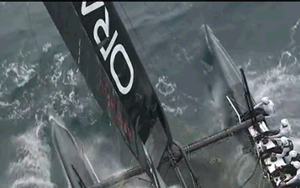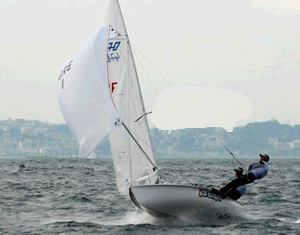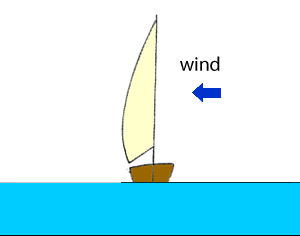Yachting and the centre of gravity
Yachting involves many forces which are manipulated in different ways during races. Wind forces act to try and tip the boat into the sea while gravitational forces act to stabilise it.

Consider the picture on the right. Wind forces act on the boat propelling it forwards on the surface of the water. Drag forces act to impede the boat's motion through the water.
Other forces include gravity pushing the boat downwards while the buoyant force of the water acts upward.
Gravity acts on a body through a point known as the centre of gravity. An object is very stable if its centre of gravity is below the point of rotation.
Why are the sailors hanging from the side of the boat?

Not all the forces acting on the boat are obvious. Take, for example, the wind forces pushing on the sail, the result would be to flip the boat in the water, however, this does not happen.
When you look beneath the water line you can see why. Ballast is used to lower the centre of gravity of a boat below the point of rotation. One of the functions of a keel is to house the ballast. This helps stabilise the boat from wind forces acting on the sail that would otherwise flip the boat in the water.
The further the centre of gravity is from the point of rotation the more stable the yacht.
In fact, the heavier the ballast the more stable the boat is in high winds and rough seas. The greater the distance from the bottom of the boat the greater the stability of the boat, the closer the ballast is to the bottom of the boat the more unstable the boat is in high wind.
